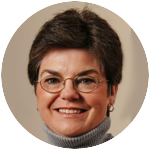
Effie Caldarola
The year was 2012, ancient history in our Twitter-universe. But to me, as recent as yesterday’s headline.
Trayvon Martin was 17 years old, wearing a hoodie on a chilly night. He’d been to the convenience store for snacks and was walking to his dad’s apartment.
He was accosted by a self-appointed vigilante, a “neighborhood watch captain,” named George Zimmerman. To Zimmerman, a black kid in a hoodie was a suspicious character. Zimmerman called police and was told to stay in his vehicle and not follow Martin.
He disregarded that advice, with tragic results. We’ll never know the exact details, but a scuffle ensued. Zimmerman had a gun. Why? Why are there always guns? Martin paid with his life. Zimmerman, the predator, was found not guilty of second-degree murder and manslaughter.
In 2012, I had a son a few years older than Trayvon. We jokingly called him, as a kid, the mayor of Oceanview, our neighborhood in Anchorage, Alaska. He was everywhere, a kid on his bike, sometimes in a hoodie.
Like Trayvon, Mike was neither a troublemaker nor a perfect kid. I felt he was safe, though, in our community, with our neighbors and our police. The “talk” with white kids was about sex; with black kids, it was about survival.
[hotblock]
Our president in 2012, Barack Obama, empathetic in crises, said that if he had a son, he would look just like Trayvon Martin. My Irish-Italian son did not look like Trayvon, the handsome black child of black parents. And yet, to me they looked painfully similar. They were, as kids will say, brothers from another mother.
Because, honestly, if you’ve ever done genealogy, you know we’re all eventually cousins. We mothers feel every mother’s pain, because every child is ours.
In the past several days, an egregious killing, less ambiguous, visually stunning, brought our country into national consensus. The deliberate, vicious killing of George Floyd shook us. We yearn to think that after all the years of deaths, of injustice, of assassinations, that maybe this time things will be different.
But will they?
This November, the ballot box in every state, every city and county, will be a sacred place. Those who peacefully protested — and they number in the thousands and thousands — must register and vote. We must fight for voting by mail and resist voter suppression. We must stand up, as mothers of every son and daughter.
For our church, this is a pivotal moment. I know a nun, very old now, who was at the Edmund Pettus Bridge in Selma, Alabama, in 1965. Her bishop, after seeing protesters beaten there, wanted a visible Catholic presence. Clergy came in their collars, nuns in their long serge habits.
We need desperately, now, to see and hear that Catholic presence. For the integrity of our American church, to ensure the church’s future with our youth, to be a church that witnesses Christ poor among us, we need presence.
Bishop Mark J. Seitz of El Paso, Texas, took a knee, very visibly, at a June 1 demonstration to pray for George Floyd. Two days later, Pope Francis called to thank him.
Washington Archbishop Wilton D. Gregory protested that it was “baffling and reprehensible that any Catholic facility would allow itself to be so egregiously misused and manipulated” after President Donald Trump used the St. John Paul II National Shrine for a photo op.
Seattle Archbishop Paul D. Etienne said of another photo, “The word of God is not a prop.”
Pray God this is the vanguard of church leadership for justice. The times demand that this be our moment.
PREVIOUS: This moment of judgment calls for more than just talk
NEXT: People who aren’t racist can help cure systemic racism



Share this story